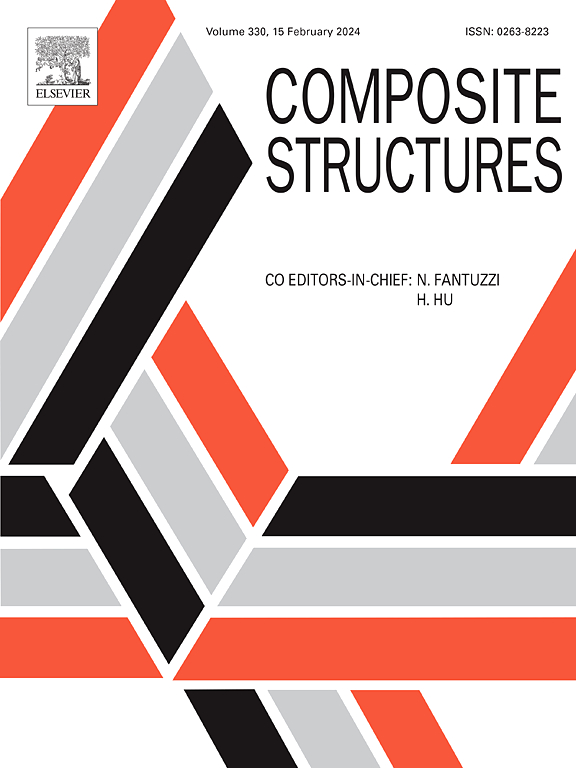Effect of hybridization of continuous and discontinuous tape composites on stiffness and strength: A computational analysis
IF 7.1
2区 材料科学
Q1 MATERIALS SCIENCE, COMPOSITES
引用次数: 0
Abstract
Numerical investigations were conducted to explore the mechanical response of hybrid layered continuous–discontinuous tape composites focusing on damage initiation and ultimate strength under both tensile and bending loads. These composites combine layers of continuous unidirectional tapes with layers of randomly oriented short (discontinuous) tapes. A series of laminated specimens was analyzed, representing various strategies to create hybrid combinations as well as the limit cases of pure continuous and pure discontinuous tapes. The hybrid architectures consist of different stacking sequences and varying ratios of continuous and discontinuous plies. Detailed mesoscale simulations were performed utilizing a finite element model that explicitly incorporates the ply-level arrangements of both continuous and discontinuous plies. By means of numerical homogenization, the effective elastic stiffness and strength of each configuration were determined, enabling the establishment of scaling laws for these properties with respect to spatial variability and the ratio of continuous to discontinuous tape content. These findings serve as a roadmap for optimizing the blend of these two types of tape to meet specific mechanical performance targets, thereby advancing the development of more sustainable and high-performing composites.
连续和不连续带状复合材料杂化对刚度和强度影响的计算分析
针对复合层状连续-不连续带复合材料在拉伸和弯曲载荷作用下的损伤起裂和极限强度进行了数值研究。这些复合材料结合了连续的单向带层和随机定向的短(不连续)带层。分析了一系列层压试样,代表了各种创建混合组合的策略以及纯连续和纯不连续胶带的极限情况。混合结构由不同的堆叠顺序和不同比例的连续层和不连续层组成。详细的中尺度模拟利用有限元模型进行,该模型明确地结合了连续和不连续层的层级安排。通过数值均匀化,确定了每种结构的有效弹性刚度和强度,从而建立了这些特性与空间变异性和连续与不连续磁带内容的比例相关的标度规律。这些发现为优化这两种类型的胶带的混合以满足特定的机械性能目标提供了路线图,从而推动了更可持续和高性能复合材料的发展。
本文章由计算机程序翻译,如有差异,请以英文原文为准。
求助全文
约1分钟内获得全文
求助全文
来源期刊

Composite Structures
工程技术-材料科学:复合
CiteScore
12.00
自引率
12.70%
发文量
1246
审稿时长
78 days
期刊介绍:
The past few decades have seen outstanding advances in the use of composite materials in structural applications. There can be little doubt that, within engineering circles, composites have revolutionised traditional design concepts and made possible an unparalleled range of new and exciting possibilities as viable materials for construction. Composite Structures, an International Journal, disseminates knowledge between users, manufacturers, designers and researchers involved in structures or structural components manufactured using composite materials.
The journal publishes papers which contribute to knowledge in the use of composite materials in engineering structures. Papers deal with design, research and development studies, experimental investigations, theoretical analysis and fabrication techniques relevant to the application of composites in load-bearing components for assemblies, ranging from individual components such as plates and shells to complete composite structures.
 求助内容:
求助内容: 应助结果提醒方式:
应助结果提醒方式:


